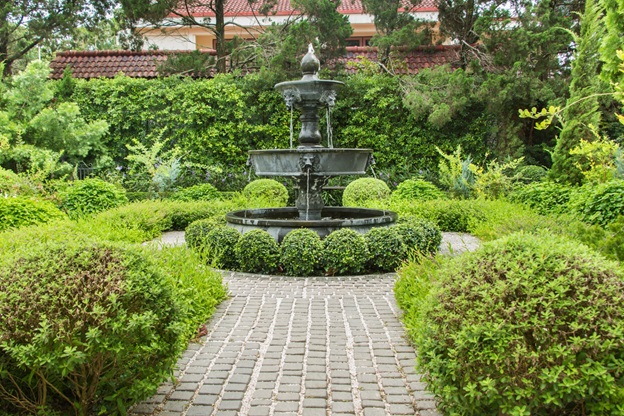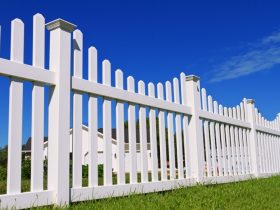About 77% of American households are gardening—more now than ever before! From little succulents to blooming night jasmine, plants can have a big impact on your home. What would you add to your own home garden?
It’s time to get your hands dirty! Here are the eight tips you need to learn how to start a garden. With these tips, you can experience the rewards of giving back to Mother Nature firsthand.
Watch your garden blossom and thrive! Discover how to start a home garden with these easy tips today.
- Choose a Theme
The demand for vegetable plants has gone up nearly 1,200% year-over-year. Whether you start a vegetable, herb, or flower garden is up to you. If you want to learn how to start a garden, however, it helps to have a theme in mind.
If you choose vegetables and herbs, you can add a little more to your dinner plate. You can try out new fruits and vegetables as well. Meanwhile, you’ll have peace of mind knowing herbicides weren’t involved.
A flower garden, on the other hand, can add fragrance, color, and flair to your home.
Do you want to replant annuals that bloom in time for summer, or do you prefer perennials? As you use these gardening tips, keep your long- and short-term goals in mind.
You can explore a catalog or visit a garden center to choose the plants you prefer. Consider how each plant adapts to the sun, soil, and climate in your area. For example, you can get started with:
- Vegetables like tomatoes, peppers, lettuce, and cucumbers
- Annuals like impatiens, marigolds, and zinnias
- Perennials like daylilies, pansies, and phlox
To begin, start small. Learn each plant’s specific maintenance requirements, too.
The plants you enjoy tending to most could surprise you!
- Find the Right Spot
For the best garden possible, consider the location. Your flowers and vegetables will likely need six to eight hours of sunlight each day. Take a look at your yard.
Which spots receive full versus partial sun?
If your garden is mostly shady, that’s okay. You can still grow outdoor ferns, hostas, and other shade-loving species. You might struggle to grow tomatoes, though.
In order for your plants to thrive, you need to find the right spot. Consider each plant’s sun requirements. You can check their plant tags or speak with someone at your local garden center.
As you search for a spot in your garden, make sure the space is relatively flat. Dealing with a sloping garden might take a lot of time. It’s generally expensive and difficult to prepare a sloping garden as a beginner, too.
When starting a garden, look around for windbreaks. Windbreaks will protect your plants from strong gusts of wind.
Place your garden in an area where you can see it from your home, too. If your garden starts to wilt, you’ll notice right away.
Don’t forget to consider the location of the nearest water spigot, too!
Make sure you can get a hose into your lawn when needed.
- Clear the Earth
Once you’ve chosen the perfect spot, it’s time to clear the earth!
First, get rid of sod that’s covering the area. You might need to slice under the sod using a spade. Then, cut the sod into sections.
You can place the removed sod on a compost pile to decompose.
You can also smother your grass with newspaper. This method takes longer, though. Cover your garden with about five sheets of newspaper.
Then, spread a three-inch layer of compost onto the newspaper and wait about four months. The compost and paper should decompose by spring.
You can also make an effort to improve the soil. Is the soil too alkaline, acidic, or infertile? Add organic matter to give it a boost.
For example, you can add old manure, dry grass clippings, or decayed leaves to your new garden.
You can also schedule a soil test through your county cooperative extension office.
- Work the Soil
Working the soil will prepare the earth for sowing or planting. This step helps roots penetrate the soil to gain access to water and nutrients.
With tilling, you’ll cultivate the soil using a mechanical device, such as a rototiller. Digging, on the other hand, is ideal for smaller plant beds.
Tilling can destroy earthworms and other microorganisms. Keep that in mind before you get started.
- Start Planting
Know when to start planting each item on your list. For example, you shouldn’t plant tomatoes until the temperature starts to warm. Other plants like kale can tolerate colder temperatures.
You can grow some plants, including sunflowers and lettuce, from seeds. Read the packet to determine the planting depth, time, and spacing.
You might want to sow seeds indoors (on a windowsill or under grow lights) first.
You can also find a nursery garden to help you get started.
Otherwise, consider buying young plants. Also called transplants, you can plant these young plants into your garden directly.
- Know When to Water
Don’t let your seedlings dry out. Water them every day to keep them hydrated.
Transplants will require frequent watering while their roots become established as well.
Afterward, you’ll need to water depending on your area’s rainfall, humidity, and soil.
- Protect Your Plants
Keep moisture locked in and weeds out. Cover your garden with a few inches of mulch for added protection.
Mulch can prevent weed seeds from germinating and block excess sunlight from the soil.
- Maintain Your Garden
It’s not enough to learn how to start a garden. You’ll need to maintain your garden, too. Once it starts growing, make sure to:
- Water the plants
- Pull out weeds
- Keep destructive insects out
- Get rid of dying vegetation
- Support tall plants
- Harvest your vegetables
If you need extra help, talk to an expert at your garden center!
How to Start a Garden: 8 Tips to Help You Thrive
Watch your garden blossom, survive, and thrive! With these tips, you can learn how to start a garden in no time. Then, watch the fruits (or veggies) of your labor grow!
Don’t forget to keep those weeds and pests at bay while you’re at it.
Searching for more useful tips and tricks? We’re here to help.
Explore our latest guides today to get started.








